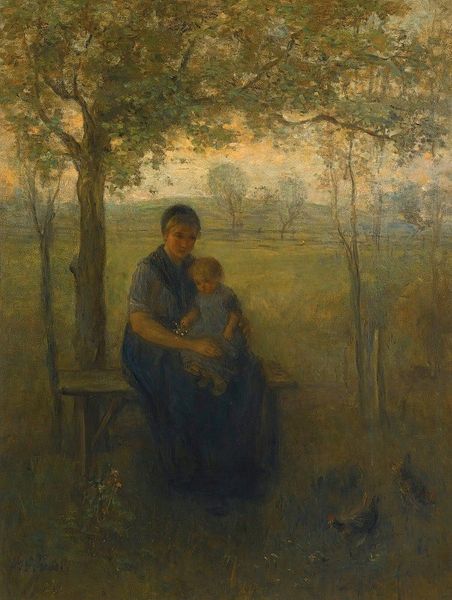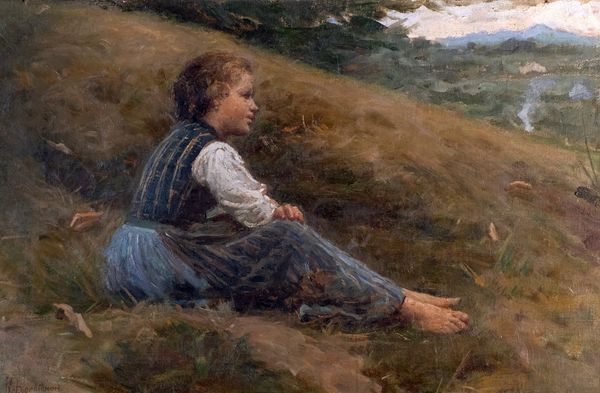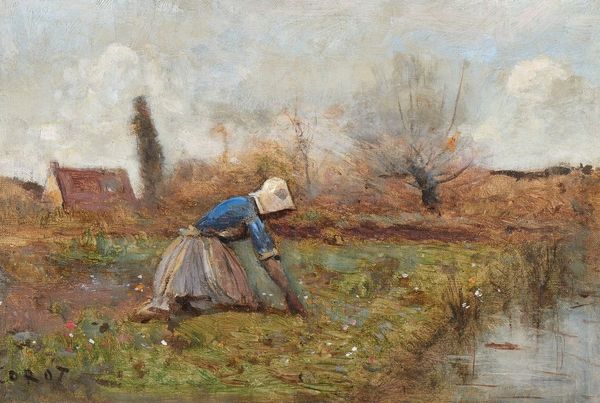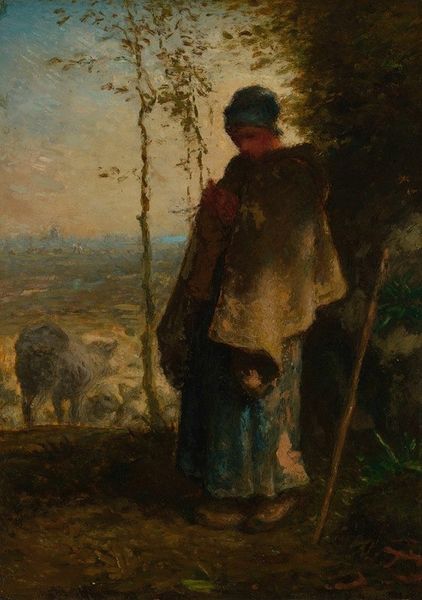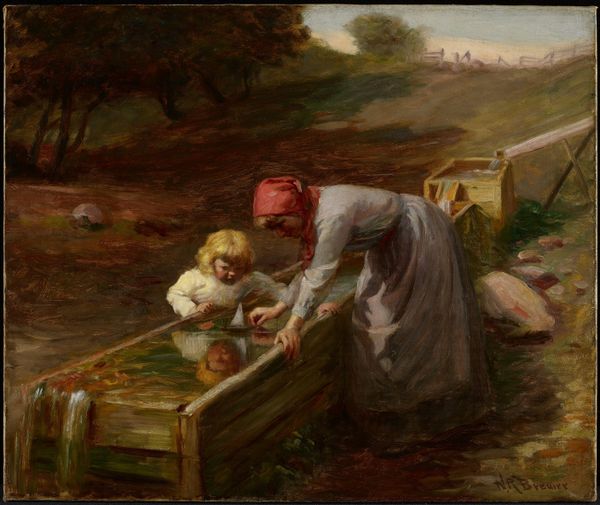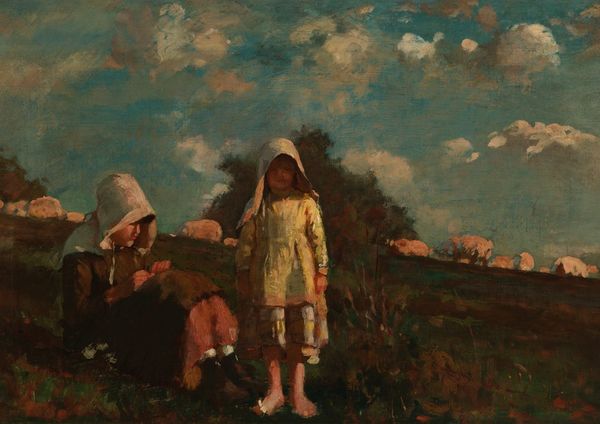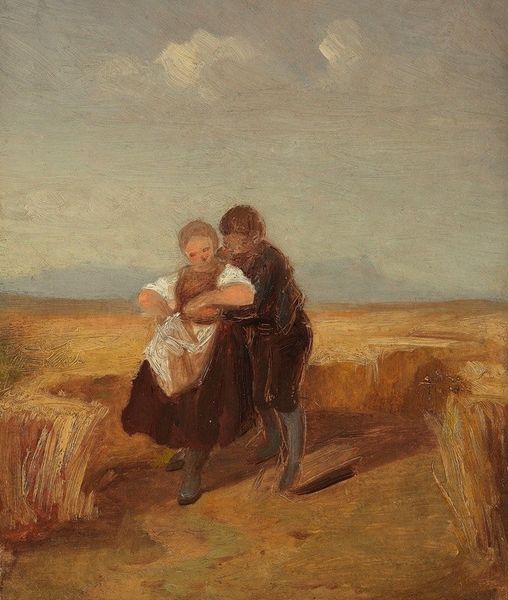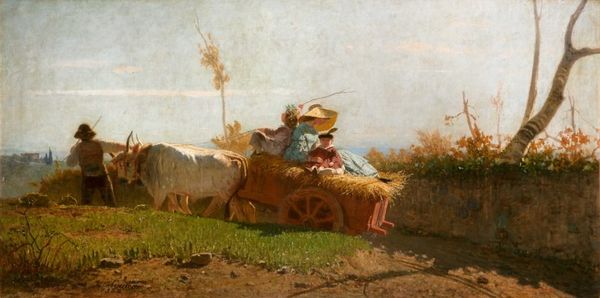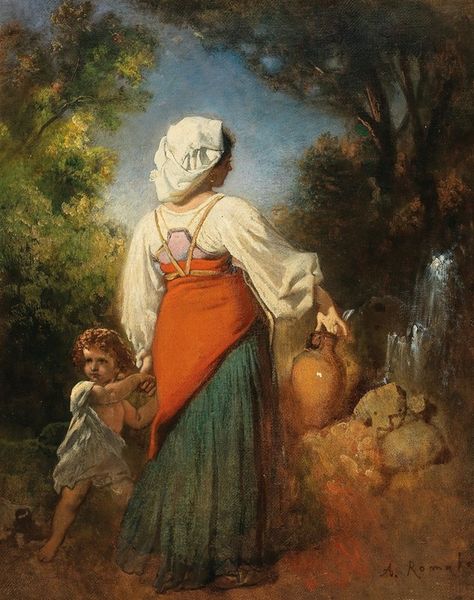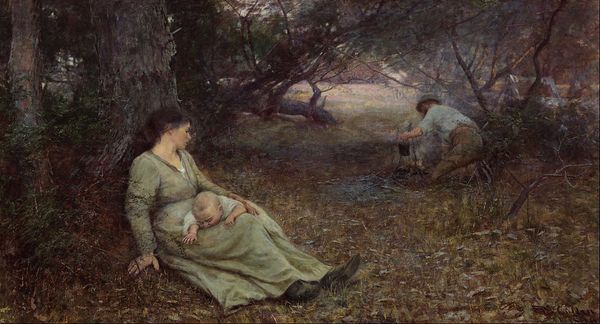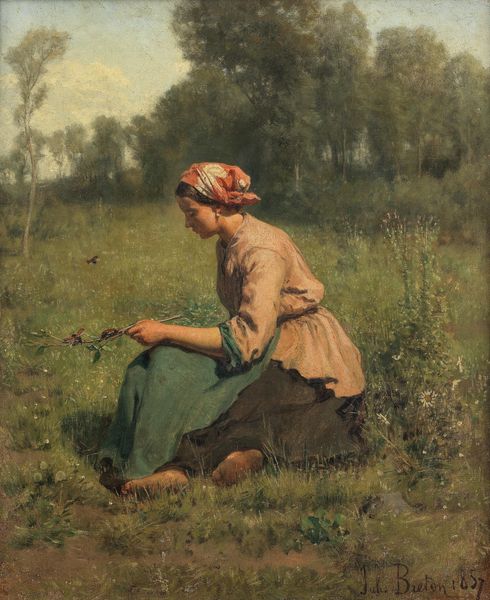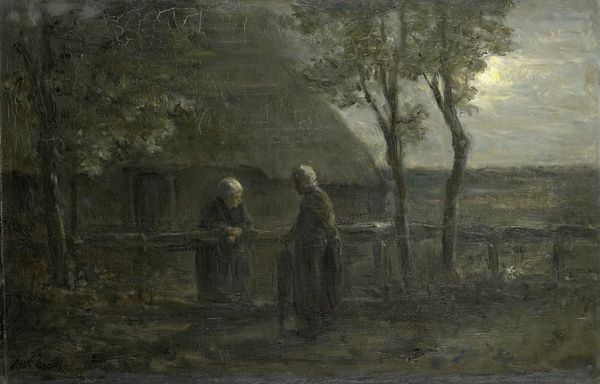
plein-air, oil-paint
#
plein-air
#
oil-paint
#
landscape
#
figuration
#
oil painting
#
intimism
#
romanticism
#
genre-painting
#
realism
Copyright: Public Domain: Artvee
Curator: Camille Corot’s "Les Deux Sœurs Dans La Prairie," or "Two Sisters in the Meadow," presents us with an intimate, yet hazy scene of figures in a landscape, rendered in oil paint. It evokes a certain melancholic stillness. What are your first thoughts? Editor: I’m immediately drawn to the tenderness in this pastoral scene. The embracing figures radiate a feeling of protection, like a mother shielding her daughter, or perhaps elder sister. This feeling, for me, overrides anything else in the scene. Curator: It’s interesting you pick up on that tenderness. I find the painting somewhat ambiguous in its socio-political context. Genre painting became more popular, representing everyday life. But it raises the question: who are these figures, really? The "sisters" motif becomes popular in 19th-century art, but what does sisterhood really signify here? What ideological message about women and social classes is this painting delivering to the audience? Editor: Ideology, always present, of course! I would say the imagery—the protective embrace, the quiet field with grazing cows— evokes themes of comfort and rural stability, ideals which were valued increasingly as the Industrial Revolution progressed. It's more dreamlike than realistic. The older figure has a clear maternal symbolism to me with her enveloping protective gesture. Curator: Maternal symbolism is a solid reading, considering the prevailing societal expectations of women. The Realist label makes sense when you consider Corot was engaging with portraying the daily lives of common people. What do you make of the style, in light of Corot’s broader oeuvre? Editor: Well, in comparison to other landscape paintings that showcase Corot's delicate light and atmospheric effects, here, the hazy figures almost emerge from the landscape as symbols themselves. Look how their neutral color palette integrates with the verdant background, they are one with their surroundings. I am very taken by this effect! Curator: The fact that it is a plein-air piece definitely brings Corot closer to the later Impressionists; the figures could certainly be swallowed up by the elements. But seeing how intimism also factors in as a core theme reminds us of its socio-cultural purpose: creating accessible genre painting reflecting everyday experiences. The hazy details were a reflection of what, exactly, within that everyday life? Editor: A return to the familial sphere maybe, with a symbolic invitation into an Arcadian ideal? Corot creates a haven from encroaching industrial society. Curator: Ultimately, a seemingly simple image contains many layers of socio-historical complexities that inform its meaning. Editor: Yes, symbols that connect on many levels. It's far more moving when you start digging!
Comments
No comments
Be the first to comment and join the conversation on the ultimate creative platform.
